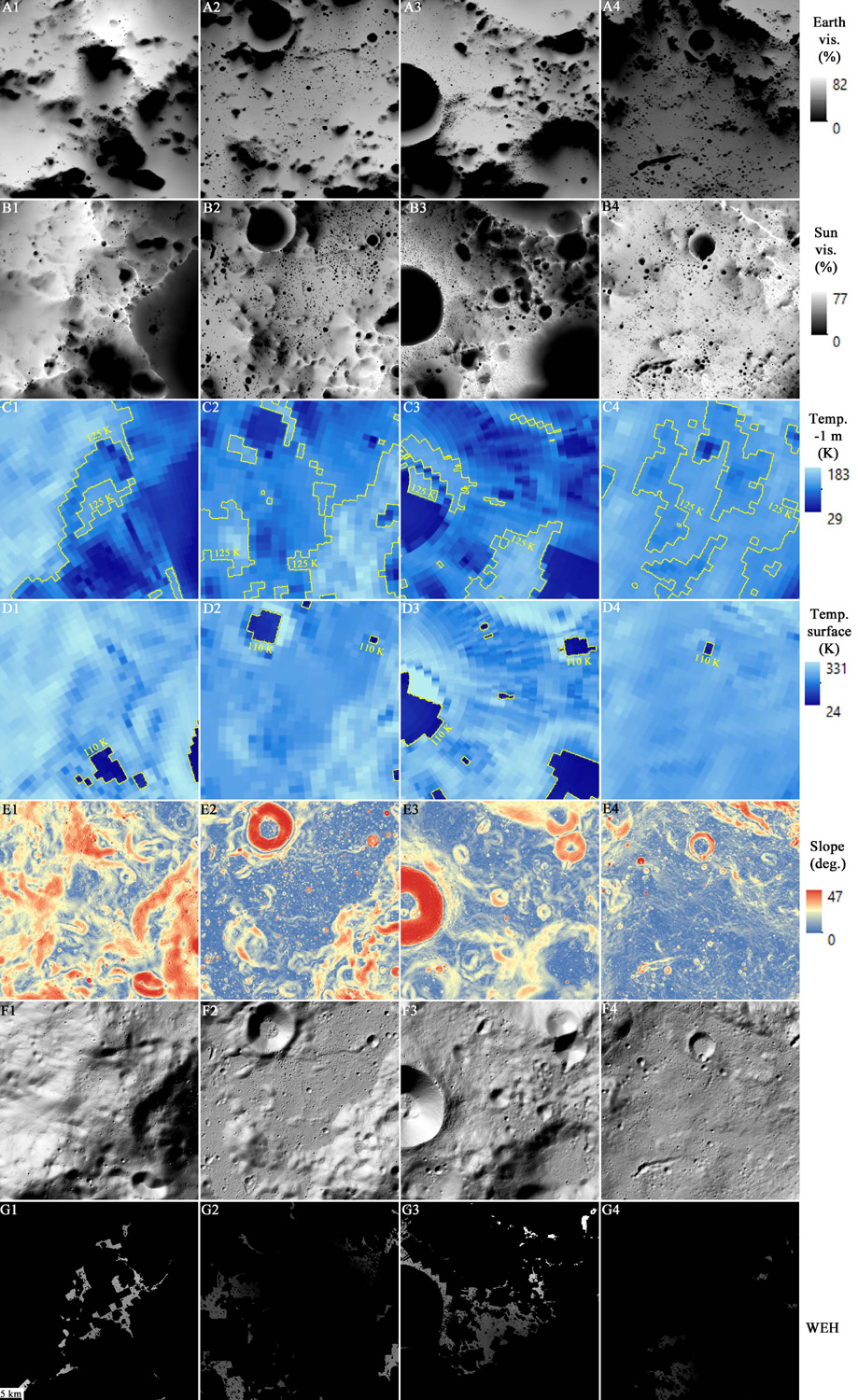Four candidate landing sites at the southern lunar polar region to drill water ice using solar powered missions
- 1CSFK, Konkoly Astronomical Institute, Budapest, Hungary (kereszturi.akos@csfk.mta.hu)
- 2ESTEC, ESA, Noordwijk, Netherlands
- 3Geographical Institute, Research Centre for Astronomy and Earth Sciences, Hungary
- 4Atmospheric, Oceanic and Planetary Physics Department, Univ. of Oxford, Oxford, UK
The evaluation of candidate landing sites for a solar powered ice drilling mission for the Moon was done at the southern polar region. Selection criteria were low slope angle surface, occasionally solar illuminated location with direct Earth radio access, together with <125 K temperature at 1 m depth. The survey showed thee-four areas where all of these needs were satisfied at sites close to each other (see the Figuew 1 below). Considering these regions, the maximal diameter for safe and scientifically relevant landing ellipse sizes are around 0.5-1 km diameter, while containing <20% of unfavourable locations can be larger around 2-4 km. The best location is around -27.03 W -86.75 S, where solar illumination can have 30% of time at least and WEH values are elevated.

Figure 1. Insets of magnified versions of the four candidate areas.
How to cite: Kereszturi, A., Boazman, S., Heather, D., Tomka, R., and Warren, T.: Four candidate landing sites at the southern lunar polar region to drill water ice using solar powered missions, Europlanet Science Congress 2022, Granada, Spain, 18–23 Sep 2022, EPSC2022-346, https://doi.org/10.5194/epsc2022-346, 2022.

